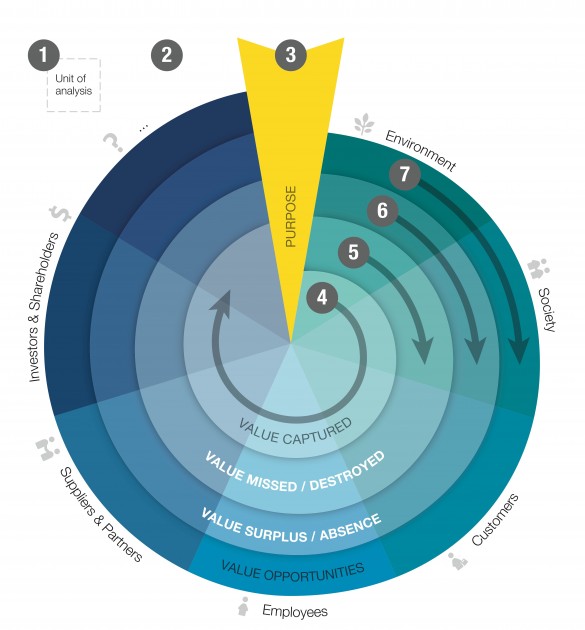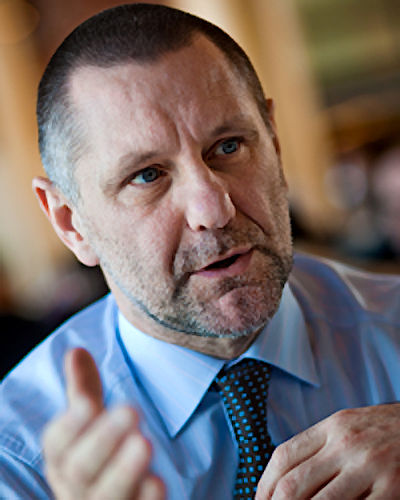Creating new business models is a key element of innovation for sustainability but many organisations struggle to identify the optimal solution. Taking a design-thinking approach to determining failed value of different options enabled the development of a new tool to assist decision making.
Here Steve Evans, Director of Research at the Centre for Industrial Sustainability at IfM, explains the thinking behind CIS’s ground-breaking tool.
Why are we failing?
For many years we had been trying to identify mechanisms that determine business models.
Like many other researchers around the globe, we had been doing this by collecting characteristics of the product and then try to map this against a number of potential business models.
Take, for example, the purchase of drinking cups. The product characteristics include: life expectancy about 10 years, cost of purchase, cost of replacement – the clever little system would then advise ‘you should think about leasing your cups’, versus all the other possible business models.
Then one day I realised why none of us were succeeding – something fundamental was amiss and the reason was that when you looked at real business models of real companies, they didn’t fit into these neat categories that academics had created. Things that look like rental were actually leasing, things that look like leasing were actually owning. In the real world it is just messy.
So, even if we somehow found the logic, we might not help real companies.
We went back to the idea ‘trust the designer’ and instead of trying to match a pre-defined business model with the innovation, we gave the designer lots of knowledge about possible future designs.
The designer of a business model is aware of leasing and renting as scenarios, they also understand the potential sustainability benefits of the product – if the material can be repurposed or recycled if it is damaged.
A design-thinking led approach
Our new approach was to take a design led approach around the value of the proposition.
It said ‘You are well educated about the possible future business models. What you really need is a better understanding of the way that you are currently succeeding and failing to deliver value to different stakeholders – your investors, customers, employees and suppliers’.
We added stakeholders and we focused on failed value exchange:
- What is it you’re failing to do at the moment?
- What is it your customer wants that you’re not yet giving them? You would be surprised at how many companies are not actually very good at analysing that. But that would be classic R&D management.
- What are you giving them that destroys their value, makes them unhealthy, that they have to spend money solving?
- What are you giving them that isn’t harming them, but they didn’t want?
- Consider your other stakeholders – what are you doing to your staff? What are you doing to your suppliers? What are you doing to the planet?
By identifying all these failures, you’ve now got a whole bunch of material that for a designer is very useful – the designer now says ‘Oh, that’s interesting. There are customers/staff who were really frustrated at dealing with that packaging problem; we could give them a different type of solution.’
At CIS we have got a whole series of tools that help people generate different business models, and the value mapping exercise part of it is one of the key intellectual pieces of the puzzle.
Designers need tools to understand failed value
What everybody else was doing at the time and is still doing is trying to build design tools. Put in these numbers and I’ll tell you what design you should have.
What we found was designers didn’t need design tools, they needed tools to better understand failed value, and that’s all they needed.
From there they could go forward and come up with better designs.
The Cambridge Value Mapping Tool – analyses failed value
The Cambridge Value Mapping Tool was developed at the IfM’s Centre for Industrial Sustainability by a research team led by Professor Steve Evans. It takes you in a guided step-by-step process through the following questions:
- What is the unit of analysis eg product, service, company, industry?
- Who are the stakeholders for the unit of analysis?
- What is the purpose of the unit of analysis?
- What is the current value captured?
- What is the value missed and/or destroyed?
- What is the value surplus and/or absence?
- What are the new value opportunities?
Find out more about the Cambridge Value Mapping Tool on the IfM website.


Professor Steve Evans
Director of Research in Industrial Sustainability
Steve spent 12 years in industry, finally as Engineering Systems Manager at Martin-Baker Engineering, the world leading manufacturer of ejection seats. He became Professor of Life Cycle Engineering at Cranfield University in 1998 and joined the University of Cambridge Institute for Manufacturing in 2011. He is Director of the Centre for Industrial Sustainability.

